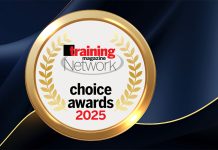Let me review the classic romance story that starts with boy meets girl, and goes something like this:
Boy: “Hey!”
Girl: “Hi.”
Boy: “Do you like anyone?”
Girl: “Yeah.”
Boy: “Who!?”
Girl: “Some guy who acts as if I don’t exist when we’re in public.”
Boy: “Ha! What a loser. Tell me who he is and I’ll beat him up.”
Girl: “OK. Go ahead. Beat yourself up.”
Now, I would love to tell you how this cute encounter eventually led to a meaningful relationship between a young man and a woman. And then this couple became engaged and were married in a quaint little chapel in Virginia. As to living happily ever after, that will have to wait for another time.
ANYTHING WORTHWHILE STARTS WITH MEANING
My point in telling this fictitious tale is because before any couple becomes engaged, they must have a meaningful relationship to begin with. They need to fall in love with each other. Similarly, before employees become engaged on the job, to their company, manager, and peers, they first must have meaningful work.
As Apple Inc. co-founder Steve Jobs once said, “The only way to do great work is to love what you do.”
I think Paul Fairlie, psychology professor at York University, would agree with Jobs. Fairlie has conducted extensive research on how employee engagement is strongly associated with employees having meaningful work to do. Meaningful work has been defined as “aspects of one’s job or work environment that facilitate the attainment or maintenance of one or more dimensions of meaning.” The idea behind meaningful work is to have sufficient autonomy, meaning, and control over one’s life, in the realm of the workplace.
Fairlie measured meaningful work along work characteristics that enable individuals to:
- Become self-actualized
- Realize their life purpose and live their values
- Reach personal goals
- Make a positive societal impact
- Feel personally accomplished
- Achieve their highest career advancement within an organization
Fairlie found meaningful work had the strongest positive correlations with work engagement, job satisfaction, organizational commitment, and low turnover when compared against other characteristics. His view is that employee “engagement, effort, commitment, and performance are important, but these are outputs. They don’t happen unless people view their work as personally meaningful.”
IDEAS FOR CREATING MEANINGFUL WORK
Why has the concept of meaningful work not played a bigger part of the solution when addressing employee engagement concerns in the workplace?
I think it is mainly because meaningful work requires a whole new way of looking at engagement. The idea also requires serious commitment by our leaders and managers. It means stepping back and looking at work in a new way. We must ask ourselves, and our employees, how to make our jobs more meaningful. It’s about asking what really matters to employees as people first.
Fairlie doesn’t leave us hanging with his research but provides some practical ideas for managers to consider when trying to increase meaningfulness a notch at a time in any job situation.
Managers should work with their direct reports through one-on-one sessions to better understand how their jobs connect with and impact the company purpose and strategy. If it is not clear to the manager, then it won’t be clear to the employee either. Simply by doing a better job with onboarding, you can create greater alignment and engagement.
More meaning also can be created for employees with their work by developing social connections with employees and their clients. Why not share the results of client/customer satisfaction surveys with all employees and not just customer-facing employees? Let employees participate in focus groups where they can be a part of discussions about product and service improvements. Fairlie suggests creating these customer connections adds valuable meaning to employees’ jobs.
Learning and Development (L&D) needs to design training programs that will help managers better understand what brings meaning to employees. We all need to learn how to discover what meaningful work looks like. Facilitating this process is not necessarily an easy task. Remember, identifying what meaningful work looks like won’t be inherent to most managers.
Mentoring opportunities for developing employees should equally focus on developing employee self-actualization and on what is most beneficial to the organization itself. What is it the employee wants to achieve through his or her work? It shouldn’t solely be about what the company can get out of the employee.
Another core area for creating meaningful work is designing career development programs that produce results. Meaningful work is sustained when you have effective long-term career planning within a company. Too often, career development programs, or talent management, are focused solely on organizational needs rather than what employees want. Career counseling should align work meaning with the employee’s purposes, goals, and values, along with the company’s talent management planning.
One concept that has been growing within career planning is the idea of job crafting or job sculpting. This is about examining an employee’s job description and rewriting it to accommodate more meaningful tasks and activities. Roles then become more aligned with the company business strategy. Input can be gained from employees on how they want to have a larger impact on their peers, clients, and corporate social responsibility. This is what meaningful work is all about.
Perhaps this is the way we all need to tackle the employee engagement question. Start with creating meaningful work first.
Roy Saunderson is author of “GIVING the Real Recognition Way” and Chief Learning Officer at Rideau Recognition Solutions. His consulting and learning skills focus on helping companies “give real recognition the right way wherever they are.” For recognition insights, visit: http://AuthenticRecognition.com. For more information, e-mail him at RoySaunderson@Rideau.com or visit www.Rideau.com.


